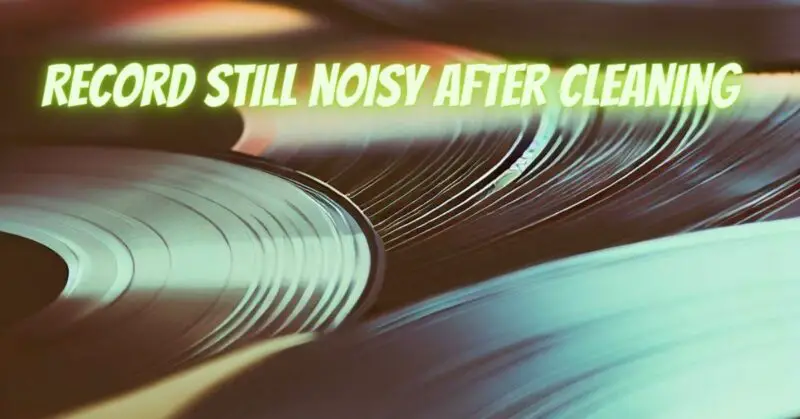Vinyl records have been making a remarkable comeback, attracting music enthusiasts with their warm analog sound and tactile charm. However, despite meticulous cleaning and care, some records may still exhibit noise issues that can mar the listening experience. In this article, we’ll explore the common reasons behind persistent record noise and provide solutions to help you enjoy your vinyl collection to the fullest.
Understanding Persistent Record Noise
Persistent record noise refers to unwanted sounds or imperfections that persist even after a vinyl record has been cleaned and maintained. These noises can manifest as pops, crackles, surface noise, or other unwanted artifacts during playback. Several factors can contribute to persistent record noise:
- Surface Contaminants: Dust, dirt, and debris can accumulate in the record’s grooves, leading to persistent noise issues. Cleaning the surface may not always eliminate deeply embedded contaminants.
- Record Wear and Damage: Over time, records can experience wear and tear, including scratches and groove damage. These physical imperfections can result in audible noise that cleaning alone may not resolve.
- Static Electricity: Static buildup on the record’s surface can attract dust and debris, contributing to surface noise even after cleaning.
- Storage Conditions: Improper storage, such as exposure to high humidity or temperature extremes, can lead to mold growth or warping, causing persistent noise.
- Stylus and Cartridge Issues: A worn or misaligned stylus (needle) or a damaged cartridge can exacerbate record noise problems.
Solutions for Addressing Persistent Record Noise
- Advanced Cleaning Methods: Consider using specialized record cleaning machines or professional cleaning services that employ ultrasonic cleaning techniques. These methods can provide a deeper clean and help remove embedded contaminants.
- Stylus Inspection and Replacement: Examine the stylus for signs of wear or damage. A worn stylus can exacerbate noise issues and damage your records further. Replace the stylus if necessary, and ensure it’s properly aligned.
- Cartridge Check: Inspect the cartridge for any visible damage or misalignment. If you suspect cartridge issues, consult with a professional for diagnosis and potential replacement.
- Anti-Static Solutions: Use anti-static brushes, mats, or cleaning solutions to minimize static buildup on the record’s surface.
- Record Storage: Store your records in a cool, dry, and upright position away from direct sunlight and temperature extremes. Invest in proper inner and outer sleeves to protect your vinyl from contaminants and physical damage.
- Noise Reduction Technologies: Consider using external noise reduction technologies or software during playback to help minimize the impact of persistent record noise.
- Digitization: If your record exhibits severe noise issues that cannot be resolved through cleaning and maintenance, consider digitizing the content. Digital audio restoration software can help reduce noise and improve the listening experience.
Persistent record noise can be frustrating, but it’s not necessarily a lost cause. By employing advanced cleaning methods, inspecting and maintaining your stylus and cartridge, and ensuring proper storage and handling, you can minimize noise issues and continue enjoying your vinyl collection. Remember that some records may have inherent imperfections due to their age or previous wear, so a degree of noise may be unavoidable. Nonetheless, with proper care and attention, you can maximize the quality of your vinyl listening experience.


